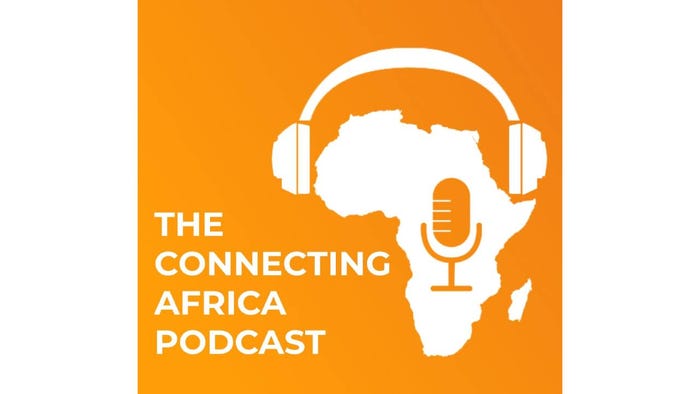Mobile gender gap narrows slightly in sub-Saharan Africa: GSMAMobile gender gap narrows slightly in sub-Saharan Africa: GSMA
Over 200 million women were still not using the mobile Internet in sub-Saharan Africa in 2023, according to the Mobile Gender Gap Report 2024 from the GSMA, but the mobile gender gap did narrow for the first time in five years.

Women's rate of mobile Internet adoption increased slightly over the past year both in sub-Saharan Africa and globally according to the annual Mobile Gender Gap Report 2024 released by the GSMA today.
The GSMA found that there are now more women in low- and middle-income countries (LMICs) using mobile Internet than ever before - 1.5 billion (66%) in total. By comparison, 78% of men now use mobile Internet, but their rate of adoption slowed in 2023.
The gender gap in mobile Internet adoption across these countries also narrowed for the first time since 2020, due to women adopting it at a faster rate than men.
Globally women are now 15% less likely than men to use mobile Internet and of the 785 million women who are still not using it, around 60% live in South Asia and sub-Saharan Africa.
In sub-Saharan Africa women are 32% less likely than men to use mobile Internet, an improvement from 34% in 2017.

(Source: GSMA's Mobile Gender Gap Report 2024).
The proportion of women in the region who use the mobile Internet has also grown from 24% in 2017 to 36% in 2023, but there are still 202 million women not using the mobile Internet in sub-Saharan Africa.
"The reduction in the mobile Internet gender gap is promising but sustaining momentum is fragile. We are collaborating with the industry, policymakers and other relevant partners to address key barriers including affordability, awareness and digital skills," said Claire Sibthorpe, head of digital inclusion at the GSMA, about the findings.
For the Middle East and North Africa (MENA) the gender gap in mobile Internet use is smaller at 16% in 2023, while 62% of women in MENA are using the mobile Internet compared to 43% in 2017.
A shift in adoption
The 2024 report revealed some progress, with an additional 120 million women connecting to the Internet via mobile in 2023, 50 million more than in 2022.
Sub-Saharan Africa saw a slight narrowing of the gender gap for the first time in five years. In South Asia notable changes include India, where women's Internet adoption rose to 37%, narrowing the gender gap from 40% to 30%; and in Indonesia where women's rate of adoption exceeded men's, reducing the gender gap from 15% to 8%.
Findings from the report were based on results from over 13,600 face-to-face surveys across 12 LMICs, and subsequent modelling and analysis of the survey data. Out of the 12 countries highlighted those in sub-Saharan Africa included Ethiopia, Kenya, Nigeria, Senegal and Uganda as well as Egypt in North Africa.
The report is funded by the UK Foreign, Commonwealth and Development Office (FCDO) and the Swedish International Development Cooperation Agency (Sida) via the GSMA Mobile for Development Foundation, with research funded in part by the Bill & Melinda Gates Foundation.
The GSMA estimates that closing the gender gap in mobile ownership and usage across LMICs could deliver an additional $230 billion in revenue to the mobile industry over an eight-year period.
Mobile's impact on Internet usage
Across LMICs, the smartphone gender gap also narrowed slightly to 13% but the gender gap in overall mobile ownership remains relatively unchanged at 8%.
The gender gap refers to how much less likely a woman is to own a smartphone than a man.
In sub-Saharan Africa the mobile ownership gap was 13% but the smartphone ownership gap was 28%, showing that women still predominantly use feature phones.
Progress was driven primarily by women in South Asia who shrunk the smartphone gap from 41% to 34%. However, there are still 40% of women in LMICs, totaling 940 million, who do not own a smartphone, with 225 million of those residing in sub-Saharan Africa.
In sub-Saharan Africa 71% of women now own a mobile phone but only 32% own a smartphone, while in MENA 82% of women own a mobile phone and 55% own a smartphone.

(Source: GSMA's Mobile Gender Gap Report 2024).
Overall, the GSMA said that mobile access and use remain unequal - women are still less likely than men to have access to mobile phones, mobile money, mobile Internet and other mobile services.
Mobile remains the primary - and often only - way people in LMICs access the Internet, accounting for 84% of broadband connections in 2023.
"Once someone owns a smartphone, they are considerably more likely to adopt mobile Internet and use it regularly which can unlock myriad socio-economic benefits. However, once women are online, they often face barriers to using mobile Internet as frequently or for the same range of use cases as men," the report found.

(Source: GSMA's Mobile Gender Gap Report 2024).
Most mobile Internet users access it every day, regardless of gender. However, the study found that female users tend to use the Internet for a narrower range of use cases than men on a weekly basis.
The most popular mobile Internet use cases for men and women in almost every survey country were for social media and instant messaging.
Addressing use and adoption barriers
The primary obstacles to mobile Internet adoption have not changed much over the years with the biggest issues among both men and women being affordability, literacy and digital skills.
However, affordability is particularly challenging for women due to factors like the gender pay gap and lower employment rates, the report's authors said. Women also face more acute barriers, driven by social norms and structural inequalities such as unequal access to education and income.
Beyond initial adoption, the report found that the top barriers to usage vary more by country than by gender, encompassing issues such as safety and security concerns, affordability (concerning data but also handsets) and connectivity experience.

(Source: GSMA's Mobile Gender Gap Report 2024).
"Gender gaps stem from complex social, economic, and cultural factors, that require collective action from a broad set of organisations. We are calling on stakeholders including governments, MNOs and development groups to work together to measure, understand and tackle women's needs and barriers effectively. Together, we can ensure digital and financial inclusion for women everywhere," Sibthorpe added.
She said that the GSMA's Connected Women Commitment Initiative shows that setting clear targets and taking informed, focused action can make a difference. Since 2016 its operator partners have collectively reached over 70 million additional women with mobile Internet and mobile money services.
*Top image source: Image by ASphotofamily on Freepik.
— Paula Gilbert, Editor, Connecting Africa


.jpg?width=700&auto=webp&quality=80&disable=upscale)
_(1).jpg?width=700&auto=webp&quality=80&disable=upscale)

_(1).jpg?width=700&auto=webp&quality=80&disable=upscale)
.jpg?width=700&auto=webp&quality=80&disable=upscale)
.jpg?width=700&auto=webp&quality=80&disable=upscale)
_(1).jpg?width=700&auto=webp&quality=80&disable=upscale)
.jpg?width=700&auto=webp&quality=80&disable=upscale)

.jpg?width=700&auto=webp&quality=80&disable=upscale)